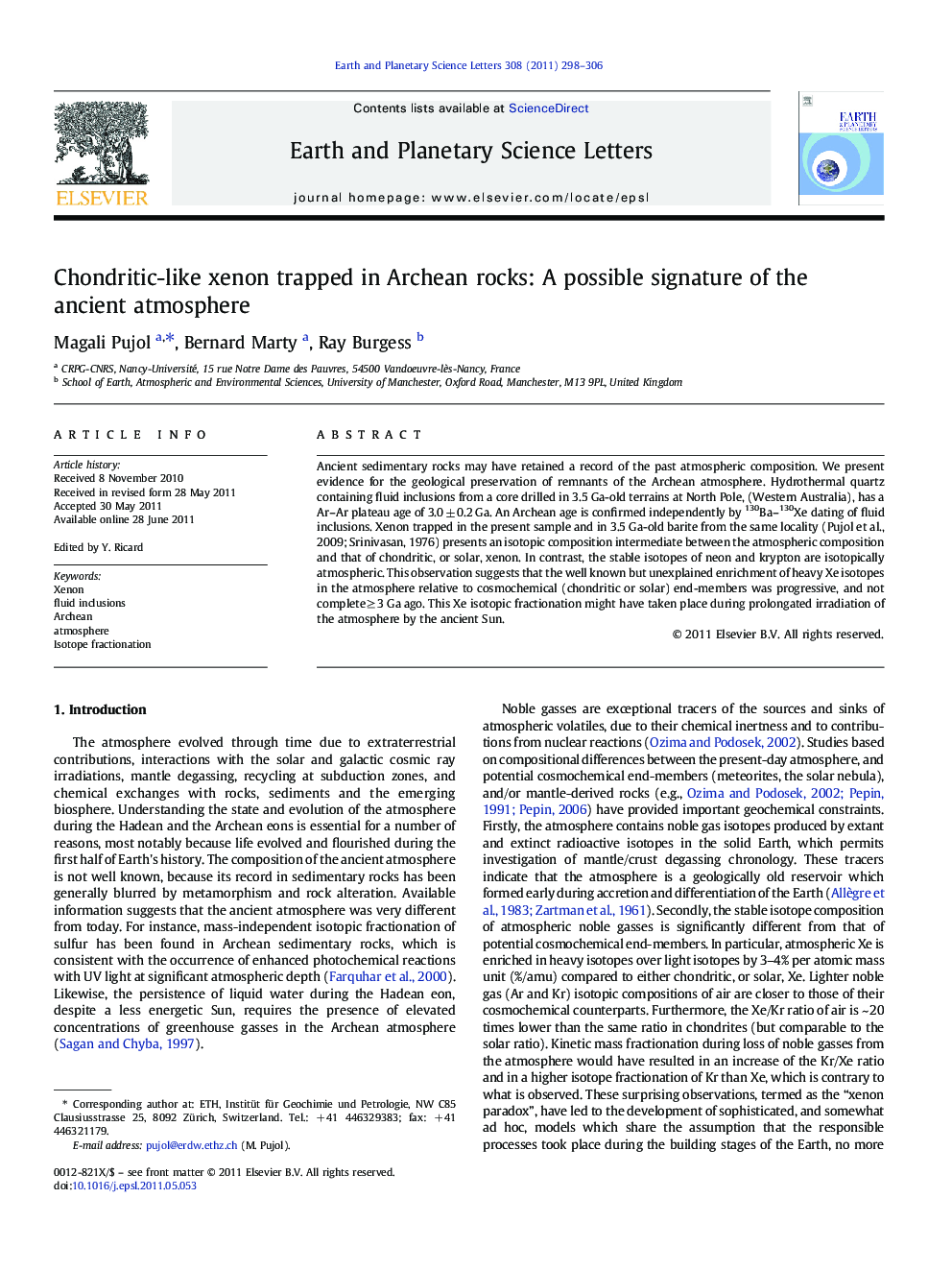| Article ID | Journal | Published Year | Pages | File Type |
|---|---|---|---|---|
| 4677854 | Earth and Planetary Science Letters | 2011 | 9 Pages |
Ancient sedimentary rocks may have retained a record of the past atmospheric composition. We present evidence for the geological preservation of remnants of the Archean atmosphere. Hydrothermal quartz containing fluid inclusions from a core drilled in 3.5 Ga-old terrains at North Pole, (Western Australia), has a Ar–Ar plateau age of 3.0 ± 0.2 Ga. An Archean age is confirmed independently by 130Ba–130Xe dating of fluid inclusions. Xenon trapped in the present sample and in 3.5 Ga-old barite from the same locality (Pujol et al., 2009; Srinivasan, 1976) presents an isotopic composition intermediate between the atmospheric composition and that of chondritic, or solar, xenon. In contrast, the stable isotopes of neon and krypton are isotopically atmospheric. This observation suggests that the well known but unexplained enrichment of heavy Xe isotopes in the atmosphere relative to cosmochemical (chondritic or solar) end-members was progressive, and not complete ≥ 3 Ga ago. This Xe isotopic fractionation might have taken place during prolongated irradiation of the atmosphere by the ancient Sun.
Research highlights► We present evidence for the geological preservation of the Archean atmospheric Xe. ► We dated Archean fluid inclusions by two different methods: Ar–Ar and Ba–Xe. ► Enrichment of heavy Xe isotopes in the atmosphere was not complete 3 Ga ago. ► Xe fractionation could be due to the irradiation of the atmosphere by the ancient Sun.
